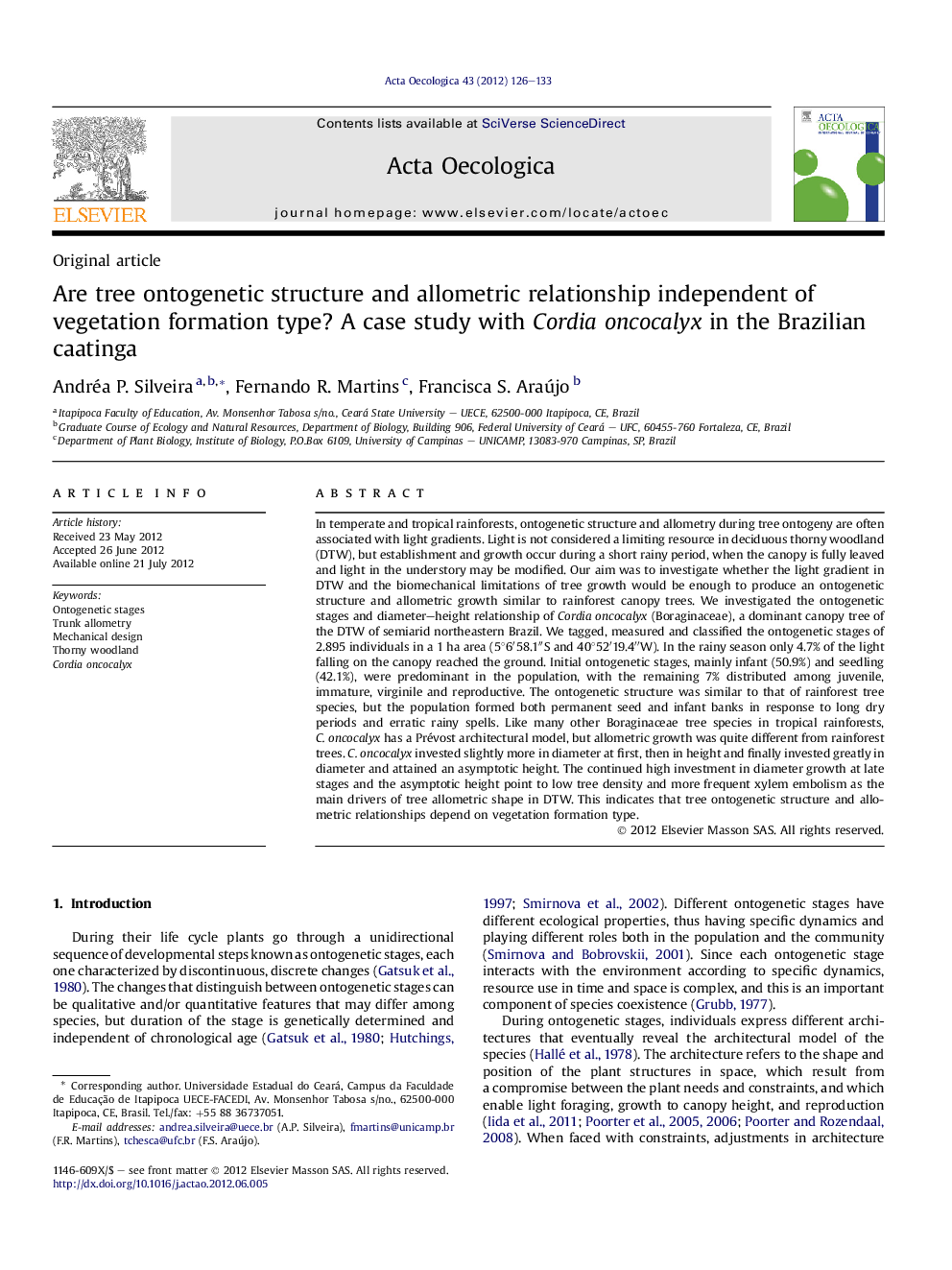| کد مقاله | کد نشریه | سال انتشار | مقاله انگلیسی | نسخه تمام متن |
|---|---|---|---|---|
| 4380869 | 1617728 | 2012 | 8 صفحه PDF | دانلود رایگان |

In temperate and tropical rainforests, ontogenetic structure and allometry during tree ontogeny are often associated with light gradients. Light is not considered a limiting resource in deciduous thorny woodland (DTW), but establishment and growth occur during a short rainy period, when the canopy is fully leaved and light in the understory may be modified. Our aim was to investigate whether the light gradient in DTW and the biomechanical limitations of tree growth would be enough to produce an ontogenetic structure and allometric growth similar to rainforest canopy trees. We investigated the ontogenetic stages and diameter–height relationship of Cordia oncocalyx (Boraginaceae), a dominant canopy tree of the DTW of semiarid northeastern Brazil. We tagged, measured and classified the ontogenetic stages of 2.895 individuals in a 1 ha area (5°6′58.1″S and 40°52′19.4″W). In the rainy season only 4.7% of the light falling on the canopy reached the ground. Initial ontogenetic stages, mainly infant (50.9%) and seedling (42.1%), were predominant in the population, with the remaining 7% distributed among juvenile, immature, virginile and reproductive. The ontogenetic structure was similar to that of rainforest tree species, but the population formed both permanent seed and infant banks in response to long dry periods and erratic rainy spells. Like many other Boraginaceae tree species in tropical rainforests, C. oncocalyx has a Prévost architectural model, but allometric growth was quite different from rainforest trees. C. oncocalyx invested slightly more in diameter at first, then in height and finally invested greatly in diameter and attained an asymptotic height. The continued high investment in diameter growth at late stages and the asymptotic height point to low tree density and more frequent xylem embolism as the main drivers of tree allometric shape in DTW. This indicates that tree ontogenetic structure and allometric relationships depend on vegetation formation type.
► Ontogeny and allometry of trees in deciduous thorny woodland (DTW) are presented.
► Cordia oncocalyx form seed and infant banks in response to long dry periods.
► Biomechanical models do not describe the growth of C. oncocalyx, a dominant tree in DTW.
► Height–diameter growth is not a direct response to mechanical failure in DTW.
► Height–diameter growth could be related to space availability and hydric constraints in DTW.
Journal: Acta Oecologica - Volume 43, August 2012, Pages 126–133